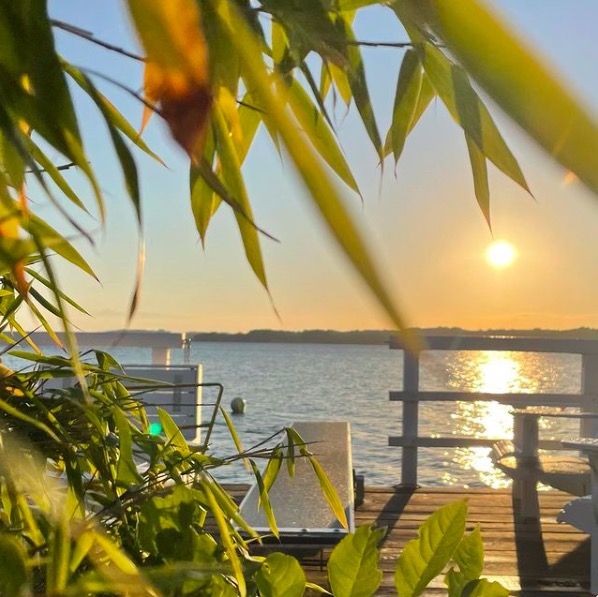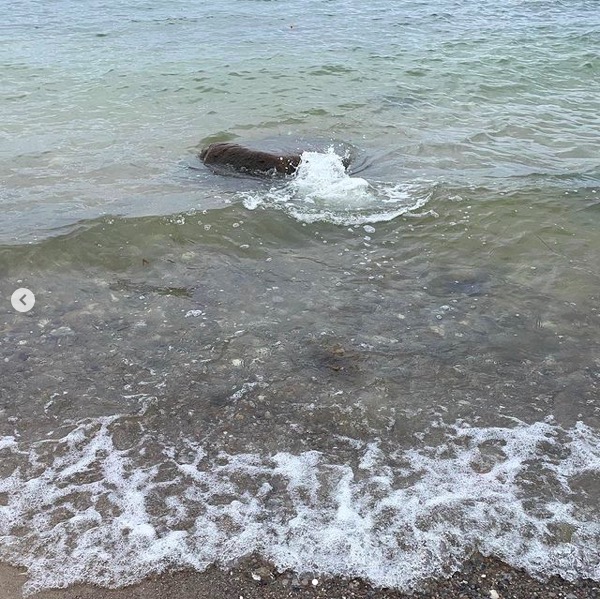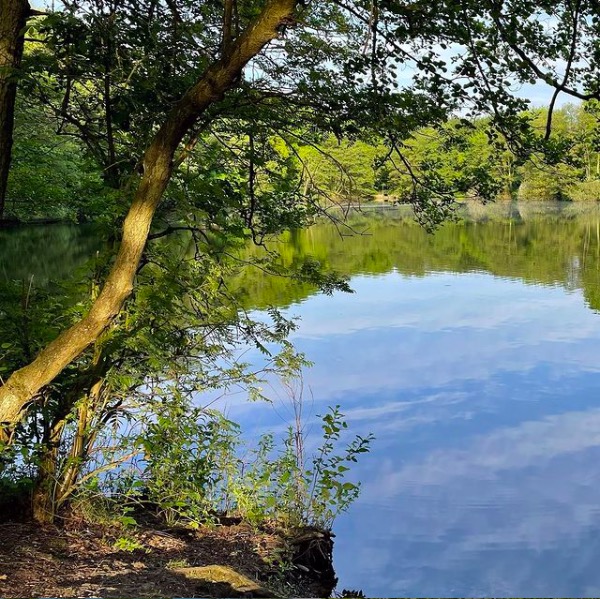Have a nice #WaveWatchingWednesday! :)


Have a nice #WaveWatchingWednesday! :)

Super excited to share a guest post today: Felipe is writing about his recent #WaveWatching article on “Evaluating shallow water waves by observing Mach cones on the beach”. I came across this article and was going to write a summary, but how much cooler is it to hear from Felipe himself? Thank you for being here! :)
—
My name is Dr Felipe Veloso1 and I tremendously appreciate Dr Mirjam Glessmer invitation to write this post and letting me contribute to the terrific #WaveWatching collection!!
One of the spectacular things of #WaveWatching is that the observations are ubiquitous. It doesn’t matter if you live in Germany, USA, Japan or Chile. Oscillations and waves are there, whether you observe swimming pools, lakes, sea, or even a relaxing bathtub ready for you. In all cases, the water is always naturally oscillating in a comfortable dance combining up-and-down and back-and-forth movements. If you enjoy these natural phenomena like I do, invest some of your time and take a look to the wonderful #WaveWatchingWednesday and #KitchenOceanography collections that Mirjam has gathered for us. But there are some occasions that these wave phenomena are obscured to our naked-eye observations and a more careful revision is needed to figure out where these oscillations are hidden. A turbulent river coming down of a hill, or the simple passing of fast water flow in front of our eyes are some examples of “waves hidden at first sight”. Such situation occurred to me in the latest family vacations we had as a break from the lockdowns imposed by the pandemia. In particular, this situation became the reason of an article in Physics Education, and also the reason of why I am writing these lines.
In an attempt to run away from the contaminated air of Santiago (the Chilean capital city, surrounded by mountains), we drove ~90 minutes to Viña del Mar city, to enjoy one week in the beach side. In this place, with the appropriate weather and personal calmness, families can enjoy the waves crushing the beach, the rising of children as “sand engineers”, and the “continuous fight” between these children and the ocean waves to avoid the destruction of the sand fortresses by the water. It is in this relaxing and family-friendly environment where my story begins.
My kids are playing in the sand and my feet are partially covered by water. After long time, we are able to come out from our houses after several months of mandatory quarantines, pandemic stress, and online teaching activities. In this particular moment, watching waves looks like a perfect panorama for me. Suddenly, the voice of my daughter Pilar wakes me up and asked me two questions: “Dad, what are you looking in the water?… and dad, why does the water creates those conical shapes at the end of the undertow current?” The first answer was easy. I was #WaveWatching. But the second answer was not so simple. What about those conical shapes?

Mach cones observed in the surface of undertow water produced by stationary millimeter grains/seashells in sand. Those feet belong to my daughter Pilar and myself. Image taken from the article.
Before her question, I haven’t thought on that. Rapidly, I realized I was observing a wave phenomena in a different and non-standard way. We were observing shock waves in the shape of Mach cones!! These cones appear when an object moves inside of a fluid with a relative velocity larger than the natural oscillation velocity of the fluid. In these situations, there is a shock occurring in the fluid itself. The tip of the cone (or V-) shape arises from the relative movement of the object, whereas the radial expansion of the wave creates the sides of the cone. This explains the formation of V-shapes in the water when a ship travels in a river, or when ducks swim in the lake. In the case of beach observations, the cones were originated by stationary small seashells or larger grains buried in the sand when the undertow water current returned back to the sea with depth not sufficient to immerse my toes.
Now, I am not really sure if my 8 years-old daughter or my 11 years-old son understood completely my explanations of waves and Mach cones. But, I am sure they understood that observing nature can be a fun and relaxing activity to enjoy in family vacations. As an exercise, I taught them how to compute the wave velocity by measuring these Mach cones. I also show them that we did not need any fancy or expensive equipment to accurately evaluate it. We only require interest and fascination on looking for an explanation of a natural phenomena… a phenomena that they could observe while enjoying the beach, the sand and the family time.

Family picture in Viña del Mar. My beautiful wife Alicia, my kids Diego and Pilar and myself. And of course, our dear dog Chewbacca trying to run away from the camera.
Further details can be found in the paper: Felipe Veloso (2021) “Evaluating shallow water waves by observing Mach cones on the beach” Phys Education 56, 054001.

Each #WaveWatchingWednesday I’m surprised by how many #WaveWatching pics I manage to take & post to my Insta in a normal work week!

Another week of my #WaveWatching Insta @fascinocean_kiel!

All of the last two week’s #WaveWatching Insta pics in one place, for your viewing pleasure! :)

Check out this week’s #WaveWatching pics from my Insta @fascinocean_kiel!

Here is a collection of #WaveWatching pics from my Insta @fascinocean_kiel! Enjoy!

Remember I made this little wave watching foldy thingy a while back? The one you see in the lower right corner of the picture above? How cool is it that it ended up in the GEO Saison magazine?
You can download the German version here (and check out some guidance on wave watching in German while you are at it! Or pick the English version, whichever you prefer). And obviously pick up the magazine at your friendly neighbourhood newspaper place, or order it online!
A week’s worth of wave pics from my Instagram @fascinocean_kiel. Enjoy!

Looking at water is the best relaxation I know. Windy “offshore” just a few meters away, but even the little sheltering that the leaves provide and almost all waves are gone. So calming!

If you weren’t looking at this picture through a #wavewatching lens, you might think the water was completely flat. But if you look closely at the line where the reflection of the trees ends and the reflection of the sky begins, you can see a crisscross pattern of two wave fields meeting each other at an angle

Hardly any wind, lazy geese, no #wavewatching. But still pretty

Tadpoles! So cute when they come up to breathe but don’t even have legs yet

Foggy morning. See the waves propagating from an (invisible) bird somewhere in the far left? They are visible in some part of the reflection of the boundary between trees and the sky, but they haven’t reached the right half yet

Geese refusing to make waves again…

Happy #WorldOceanDay today!
Your favourite drink can tell you what your #OceanResearch should be on. Build the fortune teller (link here) and find out!

This is what my weekend looked like. Simultanously admiring the garden pond in the background, the oceanography going on in my coffee, and making the “fortune teller” for today’s #WorldOceanDay that tells you what your research should be on based on your favorite drink
Sorry for not including everybody’s favourite drinks — it only had four sides!

How do we know that all the waves here are made by animals rather than the wind? Because even though there are waves, the surface is smooth and there are no rough patches with small ripples visible, even though it’s wide open so if there was any wind at all, it wouldn’t be completely sheltered
Here are some recent #WaveWatching pics from my Instagram @fascinocean_kiel. Enjoy! :)

Isn’t it fascinating how some parts of the river reflect the sun and look much brighter, while others are darker, reflecting the trees? From those reflections we can see what the water surface must be like: fairly flat in the darker parts, with waves, i.e. sloping parts, in the bright Vs. In this case, it’s a coincidence that we see Vs: for wakes, we would have a ship or an animal at the V’s tip, and the V being the outer edge of a wake. In this case, there are obstacles on either side of the river, each disturbing the flow and forming a backwater wedge downstream. And then at some point, those wedges from either side of the river meet in the middle, forming the V.
The dark area inside the V is the area where where water is flowing fairly rapidly in the river. On the V, where we see the waves and thus rhe different reflection, the flow changes and becomes turbulent under the influence of the backwater wedges. It calms down again, the surface gets flatter, i.e. darker, and the rinse & repeat for the next V!

Nice waves from a dog jumping into the lake! The owner was very confused why I whipped out my phone when the dog jumped in, but then didn’t point it at the dog

Pretty garden pond! Would you have guessed that its surface area is less than 1m2?

Can you see where the surface area is exposed to the wind and the roughness is therefore high, and where it is sheltered and there are waves propagating in from the higher-wind areas, but no new waves being generated?